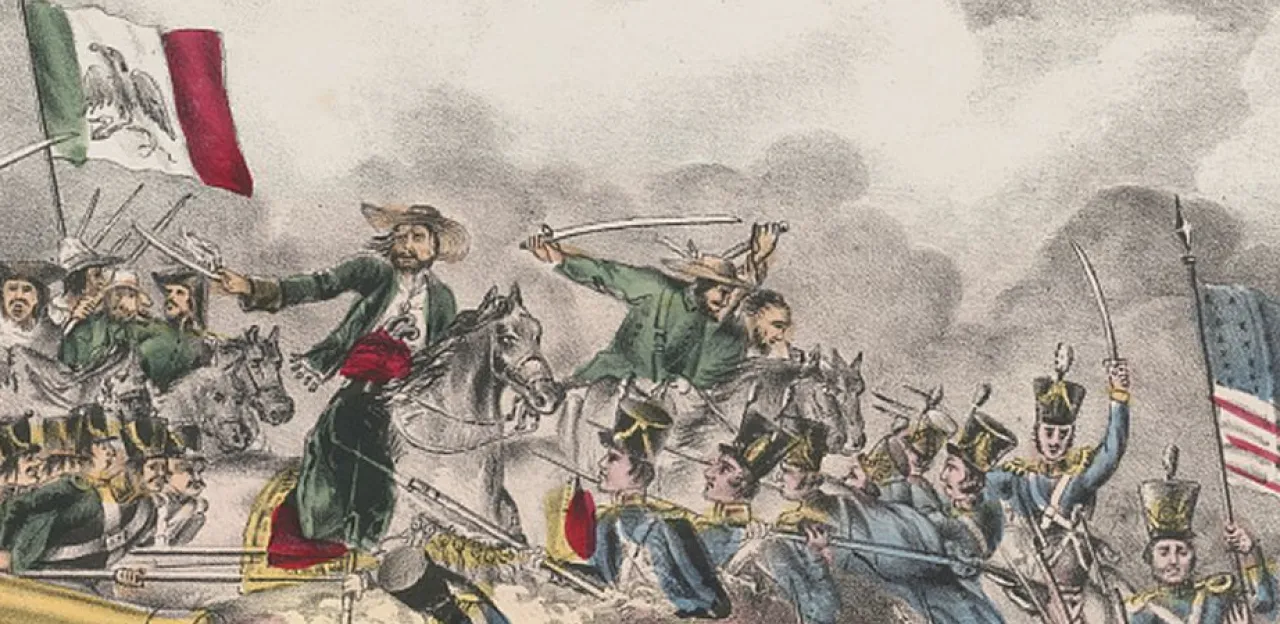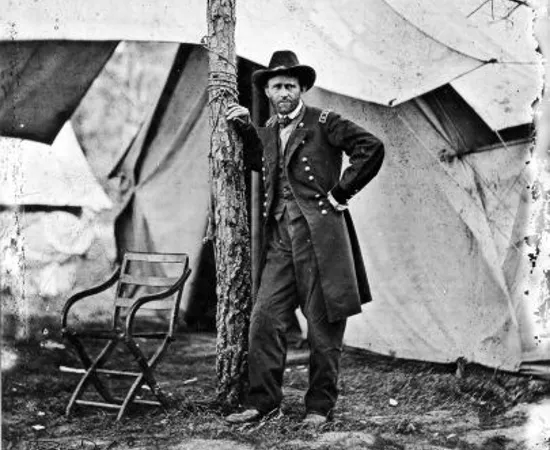The Training Ground

Despite the fact that the American military system was still in its adolescent stage during the Mexican-American War; this war provided a crucial training ground for this country’s most defining conflict of the nineteenth century, the American Civil War.
Many prominent Civil War generals first experienced military combat during the Mexican-American War, including Thomas J. “Stonewall” Jackson, George Gordon Meade, George McClellan, George Pickett, Joseph E. Johnston, Braxton Bragg, Henry Heth, Winfield Scott Hancock, and most famously Robert E. Lee and Ulysses S. Grant. The Mexican-American War provided these men with vital combat experience that they could not receive in a classroom at West Point. Up and coming officers learned that war is not glamorous but tedious, uncomfortable and tragic. The carnage these men experienced paled in comparison to the carnage they would witness during the Civil War. Nevertheless, the war with Mexico taught these men how to command troops, both army regulars, and volunteers. Volunteers developed a reputation of being difficult to manage and yet this experience greatly aided these future generals during the Civil War as an overwhelming majority of their units were made up of volunteers and not army regulars. It was during the Mexican-American War that these men developed the strategy and tactics that would dominate the Civil War. Some of these strategies and tactics include: acknowledging the importance of speed, the use of massive artillery bombardments to weaken an enemy’s defenses, which was followed by a large-scale infantry assault, and the importance of reconnaissance and reconnoitering. Additionally, many of these prominent generals became acquainted with one another through their service in the war. The information learned about one another, including temperament, battle style, and character, played vital roles on future battlefields.

General Zachary Taylor and General Winfield Scott were the two great heroes of the Mexican-American War and served as Grant’s and Lee’s mentors respectively. Taylor and Scott were complete opposites in terms of military command style, which reflects the differences seen in Grant and Lee. Grant had great admiration for Taylor and wrote in his memoirs “no soldier could face either danger or responsibility more calmly than [Taylor] and these are qualities more rarely found than genius or physical courage.” Grant tried to emulate Taylor in his command style and remain calm on the battlefield in the face of overwhelming danger and responsibility. Grant admired how Taylor rarely wore his uniform in full regalia but rather “dressed himself entirely for comfort” in a private’s uniform; nevertheless, Taylor was “known to every soldier in his army and was respected by all.” Similar to Taylor, Grant almost always wore the uniform of a private with the straps of a Lieutenant General and desired the respect of his men. A final similarity between the two generals is their writing style. Grant noted that “Taylor was not a conversationalist but on paper, he could put his meaning so plainly that there could be no mistaking it.” Grant was a brilliant writer and as such wrote concise orders that clearly conveyed his objectives, which made him a successful commander as he was able to effectively communicate with his subordinates.
While Grant served under both Taylor and Scott during the war, Lee exclusively served under Scott. Lee was an engineer on Scott’s staff which made him part of Scott’s inner circle of officers, dubbed his “little cabinet.” Scott directly influenced Lee’s command style and Lee greatly admired and respected Scott. Scott valued pomp and always wore a pristine uniform delegating his rank, a choice which Lee adopted when he commanded the Army of Northern Virginia. Scott taught Lee how to command an army in addition to teaching him important tactics and strategies. In Mexico, Lee learned that superior numbers did not guarantee a victory, that one could win with smaller forces by using superior tactics which included creative use of the terrain, surprise, flexibility, and adaptability. Lee took these lessons to heart during the Civil War as he won numerous victories despite inferior manpower by creating a tactical advantage. Scott believed risk-taking was the best way to maximize an advantage. While Scott did not like to throw his troops into battle haphazardly, he preferred offense to defense. Lee matched Scott’s boldness and became a very aggressive and calculated general. Additionally, Lee watched those in Washington’s harsh treatment of Scott which taught Lee to maintain a nonconfrontational attitude with a strong Commander-in-Chief, which served Lee well in his relationship with Confederate President Jefferson Davis. Grant notes in his memoirs that despite their differing command styles, Scott and Taylor were both “great and successful soldiers; both were true, patriotic and upright in all their dealings” and these characteristics extended to Grant and Lee respectively.

The Mexican-American War also revealed the intertwinement of politics and the military. Despite his successful military career, Scott was initially not given command of the army because he was a well-known general and a Whig with political ambitions. The Democrats did not want Scott and other military heroes to undermine them and ascend into positions of power. Thus, they initially gave command of the army to Taylor, a Whig without known political aspirations. Ironically, the war thrust Taylor into a position of celebrity, which enabled him to win the presidency in 1848. Once in command, Scott butted heads with those in Washington and President James K. Polk called in a court of inquiry and relieved Scott of command during Scott’s occupation of Mexico City, which dashed his political hopes. Whether or not Polk called in a court inquiry to ruin Scott’s future political career is still debated by historians today; however, it is generally accepted that Polk was jealous of the fame the American public and press gave Scott and Taylor. Scott’s treatment during the Mexican-American War revealed an important lesson: the Executive is the Commander in Chief of the Army and ultimately has the final authority over military matters. Thus, the relationship between Commander in Chief and Army commander requires balance to be successful. Consequently, one cannot separate the political side of war from the military side.
Overall, the Mexican-American War served taught future Civil War generals vital combat and command lessons, which served them well in the Civil War. The Mexican-American War should not be thought of as the preview for the Civil War, as the casualties and carnage are incomparable; however, generals applied the tactics and strategy they learned in Mexico on a much larger scale in the Civil War.





